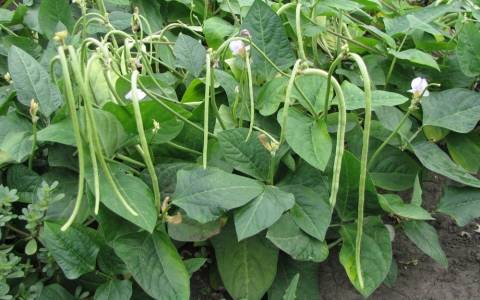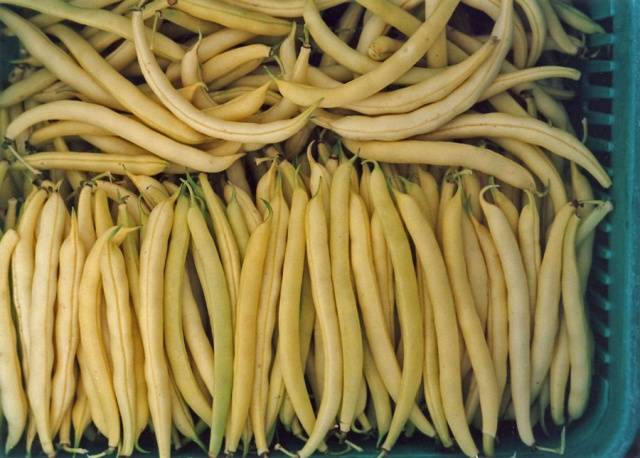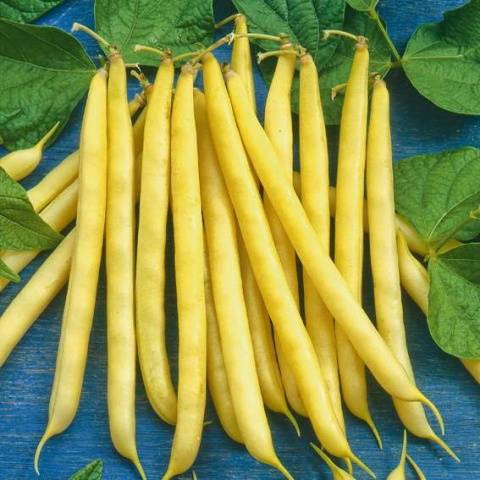Content
Green beans are one of the most ancient vegetable crops in the world. In Europe they heard about it in the 16th century, but at first it grew only in the courtyards of nobles as flowers for flower beds. The first to try the pods in cooking were the inventive Italians, who still prepare many dishes based on green beans. At the same time, it was considered a delicacy, and poor people could only afford ordinary shelled beans.
Today, green beans are popular all over the world and are considered a healthy dietary product. This vegetable crop is worthy of our attention, as well as a place in our gardens and tables. The main advantage is that it is not at all whimsical, and most varieties can be grown even in cold climates, such as in Siberia, and even more so in the middle zone, the Moscow region and the southern regions.
Many bean varieties have been bred specifically for growing in cold summer conditions. But in general, beans can withstand both drought and cold without harm to the future harvest. For those who cannot decide which variety to choose for growing on their plot, it will be useful to know the characteristics of the best varieties of green beans.And those who have not yet grown this crop will be able to see that it is not at all difficult.
Classification of varieties
Breeders have managed to develop a huge number of bean varieties. All of them are divided into certain groups according to characteristic features.
Based on the type of ripe fruit, the following 3 groups are distinguished:
- sugar beans. Cultivated to produce young pods without a parchment layer;
- all-purpose beans. It has a denser texture and can be eaten both in the form of pods and fully ripened seeds;
- peeling or grain beans. Cultivated only for seed collection.
In this classification, green beans belong to the first and second types. In turn, it is divided into groups according to the size and shape of the pods:
- regular beans. Considered the most common in Russia and European countries, the pods grow up to 20 cm and can contain up to 10 seeds;
- cowpea. These include ancient Asian varieties, the pods of which can reach 1 m in length and contain up to 100 seeds.
Also, there are species that are distinguished by the shape of the bush:
- Climbing beans. The stems can grow up to 5 m in length. Such varieties require support and ripen later, but the harvest is more abundant. Can be used as a decorative garden decoration.
- Bush beans. The bush is low (up to 50 cm in height), often spreading. Unpretentious to weather conditions, ripens quickly.
Green beans can come in a variety of colors, depending on the variety. The most popular are yellow and green types. But there may also be more poisonous shades, for example, dark purple and pink.
Features of cultivation
Drop-off times depend on the weather conditions in your area. In southern cities, sowing can begin as early as early May.In other regions, you should rely on the complete end of frost. The soil should warm up well (mid-May - early June). Only then can you begin planting in open ground. Beans grow and develop well at temperatures of +15 °C and above.
Soil preparation begins in the fall. It needs to be dug up and fertilized with mineral or organic fertilizers. In the spring, you can additionally add wood ash to each hole. Seeds are planted to a depth of about 5 cm. 10-20 cm are left between plants, and 30-50 cm between rows. Planting too densely will interfere with proper plant care and fruit development. To be completely sure that the seeds will not freeze, it would be a good idea to cover the area with film, which will help retain heat and moisture longer.
In cold regions, it will be better to plant beans as seedlings. While it’s still cold outside, the sprouts will have time to get stronger, and as soon as the frost subsides, they can already be planted in the garden. If the summer in your area is warm, dry or sprouted seeds are used for sowing.
The soil must be kept moist throughout the plant's growth. And after flowering begins, the soil is fertilized. But this is not necessary, since beans are an unpretentious plant and tend to fertilize the soil with nitrogen themselves.
Harvesting
Bush beans ripen slightly faster than climbing beans. In any case, you need to be careful to collect the pods in time before they harden.It’s worth noting right away that this will have to be done often, since the pods do not ripen at the same time.
The versatile bean can be harvested at different stages of development. And even if you forgot to pick the pods in time, you don’t have to be afraid; when fully ripe, it is no less tasty. Such seeds are also left for planting next year. They store well when dry, unlike young pods. Green beans are great for freezing and canning.
Varieties of green beans
Let's consider the most popular varieties that have performed well according to gardeners.
"Butter King"
Bush bean variety, compact. In terms of ripening time, it is early; about 50 days pass from germination to technical maturity. The pods are yellow, without a parchment layer. Productivity is high. The length of the beans is up to 25 cm. The fruits taste tender and soft. It has high disease resistance to fungi and viruses.
"Saksa 615"
It belongs to the bush varieties, the height of the plant reaches 40 cm. It matures completely in 50 days. The pods are smooth, up to 12 cm in length, light green in color. It has high taste and contains a large amount of vitamins. Despite the size of the bush, it has high productivity. There is no parchment layer and fiber, which provides a sweet and delicate taste.
"Purple Queen"
Bush plant with medium ripening periods. It stands out from other varieties with its dark purple color. The height of the bush can be up to 60 cm. It has high yield and excellent taste of the fruit. The pods grow up to 20 cm in length. Recommended for preservation. It is highly disease resistant. When heat treated, the color becomes dark green.
"Sweet Courage"
Bush variety, compact plant (up to 40 cm in height). According to the speed of ripening - early ripening. From the beginning of seed germination to the ripening of the first harvest, only 40–55 days will pass. The pods are slightly curved and cylindrical in shape. The color of the fruit is deep yellow. The beans can grow up to 16 cm. They are distinguished by the friendly ripening of the pods.
"Golden Nectar"
Belongs to climbing varieties. The fruit ripening process takes about 70 days. The pods are yellow. The shape of the beans is cylindrical, narrow, and grows up to 25 cm in length. Due to the heaviness of the fruit, it needs support. Suitable for preserving and preparing various dishes. Suitable for growing for decorative purposes. Long curved pods look very impressive.
"Winner"
Climbing variety of green beans, late ripening. Ripe fruits will have to wait up to 90 days. When planting, you should leave at least 30 cm between the bushes, since the bush is very spreading. Often grown also for decorative purposes. The flowers are large, deep red. The variety is high-yielding. The pods are green, up to 20 cm long, flat. It loves warmth, so it is recommended to plant it on the site after the frosts have completely ended.
"Crane"
Belongs to early ripening varieties of beans; it takes up to 50 days for the first fruits to ripen. The plant is bushy, compact, up to 50 cm in height. The pods grow up to 13 cm in length, up to 1 cm in width. The beans are slightly curved, rich green in color. The seeds are white. Great for frozen storage and canning.
"Panther"
One of the most popular varieties of green beans. The plant is low, bushy, up to 40 cm in height. Fully ripens within 65 days. Sown at a distance of 12 cm between seeds and 40 cm between rows.Loves warm, well-heated soil. The pods ripen together, making harvesting easier. The beans are bright yellow, fleshy, and do not have a parchment layer or fiber. The length of the pods is up to 15 cm. It has high disease resistance to anthracnose and bacteriosis. The most important advantage is very high productivity.
"Bergold"
Bush green beans. In terms of ripening time, it is classified as mid-early (up to 60 days from the first shoots to harvest). The variety is high-yielding. The bush is low, up to 40 cm in height. The pods are golden yellow, slightly curved, up to 14 cm in length. The seeds inside are oval shaped. There is no parchment layer. The variety is intended for sterile canning and freezing. It is recommended to plant seeds in the soil after it has warmed up to a temperature of at least +15 °C.
Vigna "Countess"
A special representative of the legume family. Belongs to climbing varieties. The bushes grow up to 5 m in length. The width of the pods is 1.5 cm, and can be up to 1 m in length. A slightly capricious variety of beans, it loves warmth, so in the northern regions it should be planted in greenhouses and not in open ground. If planted using seedlings, beans can be transferred to the ground no earlier than the soil warms up to +20 °C. Needs strong support. You should choose the sunniest places on your site to grow these beans.

























